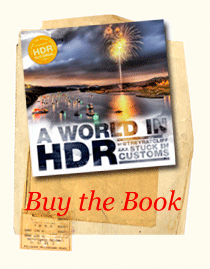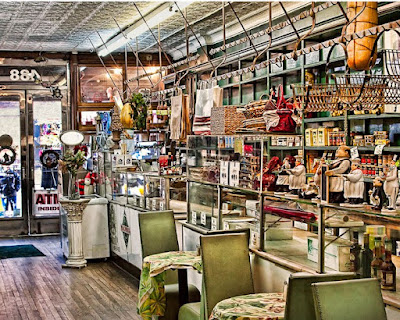
Last night my wife and I, along with some friends, went to Trey Ratcliff's
"A World in HDR" book signing in New York City. It was a first class event and I enjoyed meeting Trey, his wife Tina and his close friend Will. I follow Trey's blog
stuckincustoms every day and have listened to his on air interviews and watched his tutorial so it was like connecting with a friend. He had a few images printed on aluminium for us to look at and a slide show on a large flat screen TV. After just hanging out for a while he gave a short, but very informative talk, about HDR and the future of the process. He's just a down to earth nice guy with enormous talent. My copy, along with a numbered print is in the mail. I promise a review soon, but after looking quickly through a sample copy last night I know we're all going to love it. You can order the book
here.
The following is information supplied by the publisher, Peachpit Press.
High dynamic range (HDR) photography lets you capture the myriad colors and levels of light that you can see in the real world, and the results are amazing photographs that run the gamut from super real to surreal. Explore this fantastic realm of photography through the unique vision of renowned travel photographer Trey Ratcliff. In this book, Trey shares his phenomenal HDR photographs as well as all the backstory on the adventurous circumstances of their origin. He also reveals the techniques he used to get the final shot. The breathtaking images gracing these pages and the author’s real-world advice for capturing and manipulating images will inspire you to create your own HDR magic. So Trey also includes his simple and straightforward tutorial that teaches you everything you need to know to make your own HDR photographs, whether you’re a beginner, amateur, or professional. A unique blend of practical and inspirational, this book features
a breathtaking collection of HDR photographs
engaging explanations of how the author achieved the image
expert tips for achieving stunning results (and avoiding common mistakes)
a foolproof HDR tutorial and software recommendations
 Not only will you get some good advise but you'll see some beautiful images, here.
Not only will you get some good advise but you'll see some beautiful images, here.








